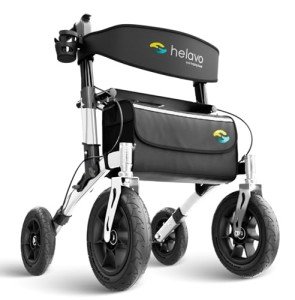Understanding Mobility Assistance: A Comprehensive Guide
In a significantly active world, mobility assistance has actually become essential for many people. Whether due to age, injury, or chronic illness, mobility obstacles can considerably impact life. This blog post dives into the numerous forms of mobility assistance, their advantages, and practical factors to consider for those seeking assistance.
What is Mobility Assistance?
Mobility assistance incorporates a range of services, gadgets, and adjustments created to assist people move securely and successfully. It aims to boost independence for those with problems in motion, allowing them to carry out everyday activities and communicate with their environments.
Types of Mobility Assistance Devices
Mobility assistance devices can vary commonly, from easy to complex aids. The following table describes some common kinds of mobility assistance gadgets, their descriptions, and suitable uses:
| Type of Device | Description | Suitable For |
|---|---|---|
| Wheelchairs | Wheeled mobility devices for individuals with minimal walking ability. | Permanent or momentary mobility needs. |
| Walkers | Frames with four legs, offering support while walking. | People requiring a stable aid. |
| Walking canes | Lightweight sticks offering support; includes basic and quad walking canes. | Those with moderate mobility concerns. |
| Crutches | Devices designed to transfer weight off the legs. | Post-surgery healing or injuries. |
| Mobility Scooters | Motorized automobiles providing transport over brief distances. | Those with mobility impairments. |
| Stairlifts | Motorized chairs that go up and down stairs. | Multilevel homes with stair ease of access problems. |
| Home Modifications | Structural modifications, such as ramps or broader entrances. | Enhancing home availability for wheelchairs or walkers. |
| Transfer Aids | Devices like sliding boards or lift systems for simpler transfers. | Assistance in relocating to and from chairs or beds. |
Advantages of Mobility Assistance
The value of mobility assistance extends beyond physical movement. Here are numerous key benefits:
- Enhanced Independence: Mobility devices empower users to perform day-to-day tasks separately, fostering self-sufficiency.
- Enhanced Quality of Life: By making it possible for greater involvement in social activities, mobility assistance contributes to psychological well-being and social combination.
- Safety and Support: Devices like walkers and canes supply physical support, minimizing the danger of falls and injuries.
- Access to Healthcare: Mobility assistance can streamline transport to medical consultations, guaranteeing users get vital care.
- Personalization Options: Many mobility gadgets can be customized to fit individual needs and preferences, guaranteeing convenience and performance.
Common Mobility Assistance Challenges
While mobility assistance can lead the way for greater independence and improved quality of life, various difficulties may arise. A few of the typical problems consist of:
- Cost: Mobility devices can be pricey, and insurance protection might vary significantly.
- Training and Familiarization: Learning to use new devices properly might require time and assistance.
- Availability Issues: Not all environments are geared up to accommodate mobility gadgets, resulting in possible barriers.
- Stigma: Social preconception around the usage of mobility help can affect self-confidence for some individuals.
Offering and Receiving Mobility Assistance
To ensure the most efficient assistance, it is essential for both suppliers and receivers of mobility aid to consider numerous elements:
- Assessment of Needs: A comprehensive assessment by a healthcare specialist can figure out the specific type of assistance required.
- Trial Period: Trying out devices can assist people find the one most suited to their way of life and preferences.
- Regular Maintenance: Maintenance of mobility devices guarantees durability and safety.
- Education: Providing training on the correct usage of mobility aids is essential for taking full advantage of advantages.
Mobility Assistance FAQs
Q1: What kinds of mobility aids are readily available?A: Common mobility aids include wheelchairs, walkers, walking canes, crutches, and scooters, amongst others. Each device is created to satisfy specific needs and preferences.
Q2: Where can I acquire mobility assistance gadgets?A: Mobility gadgets can be gotten from medical supply stores, online sellers, or through healthcare provider recommendations.
Q3: Will my insurance cover mobility assistance gadgets?A: Many insurance coverage plans offer partial coverage for mobility aids, but protection can differ based on the policy. It's recommended to contact the insurance provider for specific details.
Q4: How can I adapt my home for mobility assistance?A: Home modifications like ramp installation, wider doorframes, and grab bars in bathrooms can significantly enhance availability. Consulting with a physical therapist can supply tailored services.
Q5: How do I pick the right mobility aid for me or an enjoyed one?A: Assess the person's mobility requirements, weight capacity, and lifestyle. Trying out different gadgets can also assist in selecting the one that feels most comfortable and practical.
Mobility assistance plays a vital function in improving the independence, security, and lifestyle for people dealing with mobility difficulties. From basic canes to complex mobility scooters and home modifications, a variety of options exist to fulfill special requirements. As Outdoor Walker continues to recognize the significance of ease of access, the integration of mobility assistance services into day-to-day life will improve, making sure that everybody has the chance to lead a satisfying and active lifestyle.
By comprehending the offered options and advantages, people and their households can make educated decisions that support their mobility needs.

